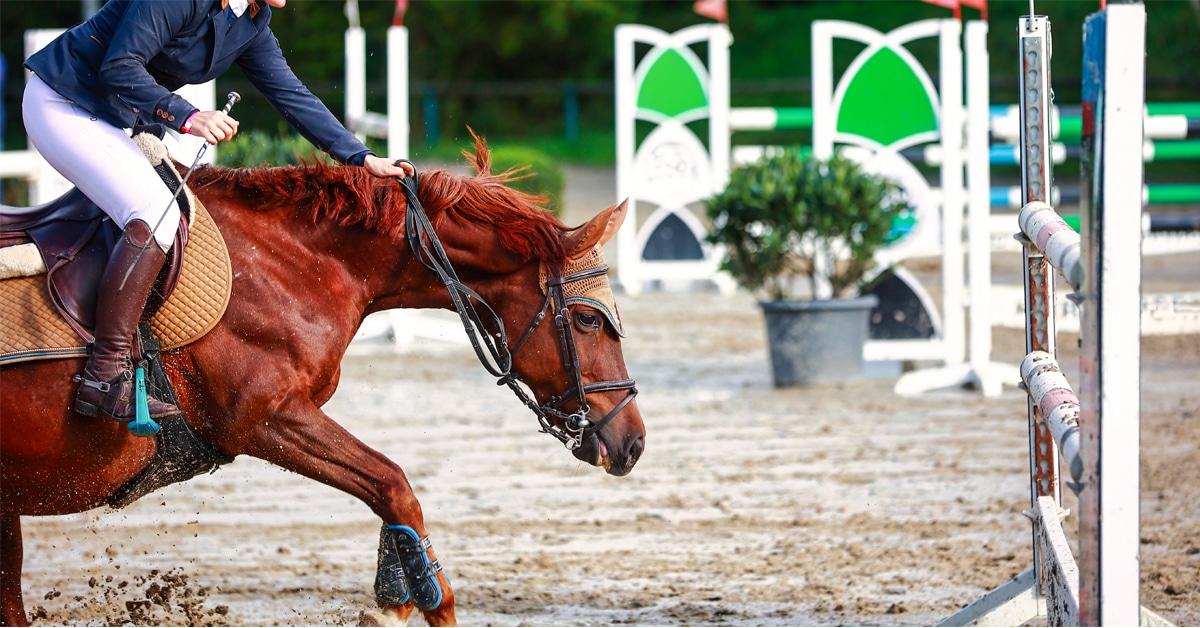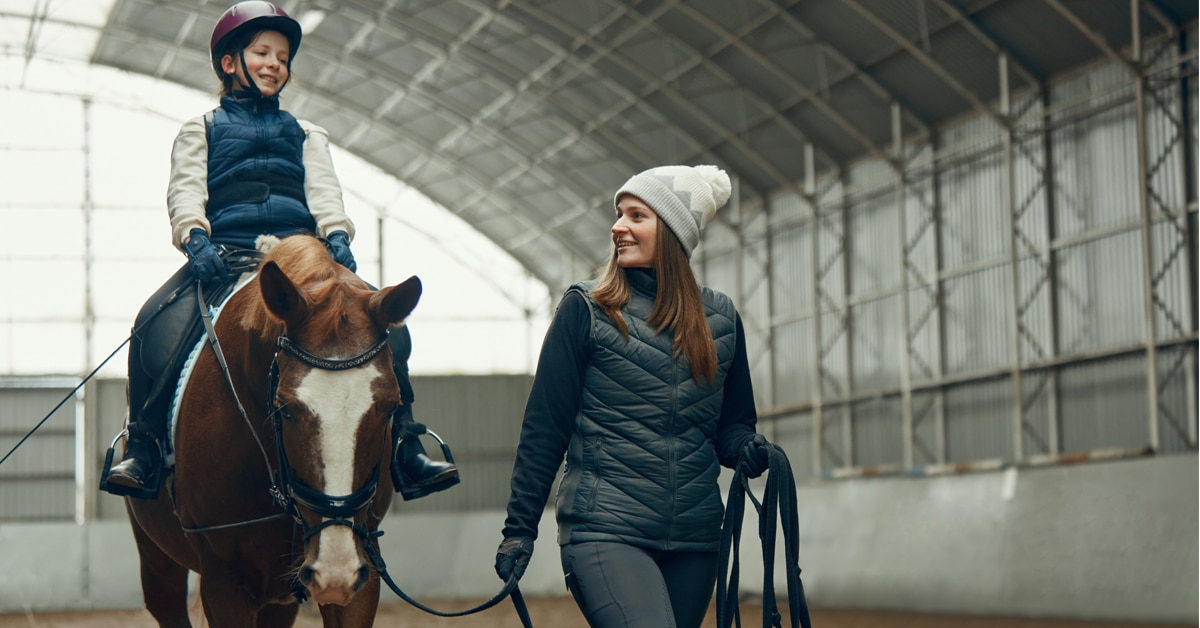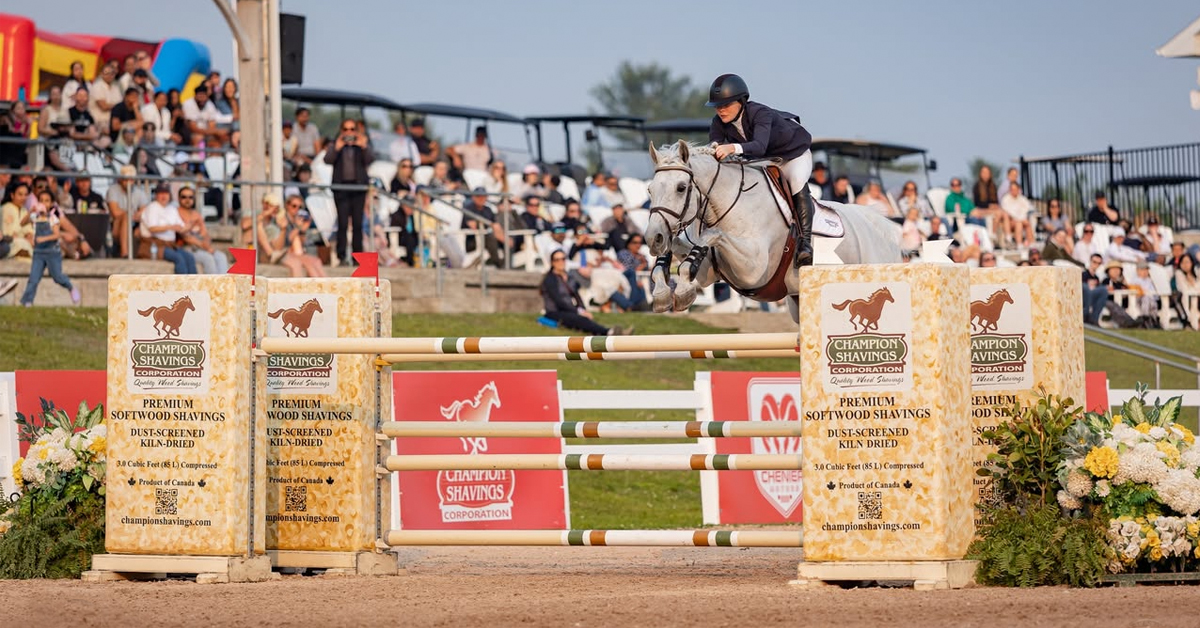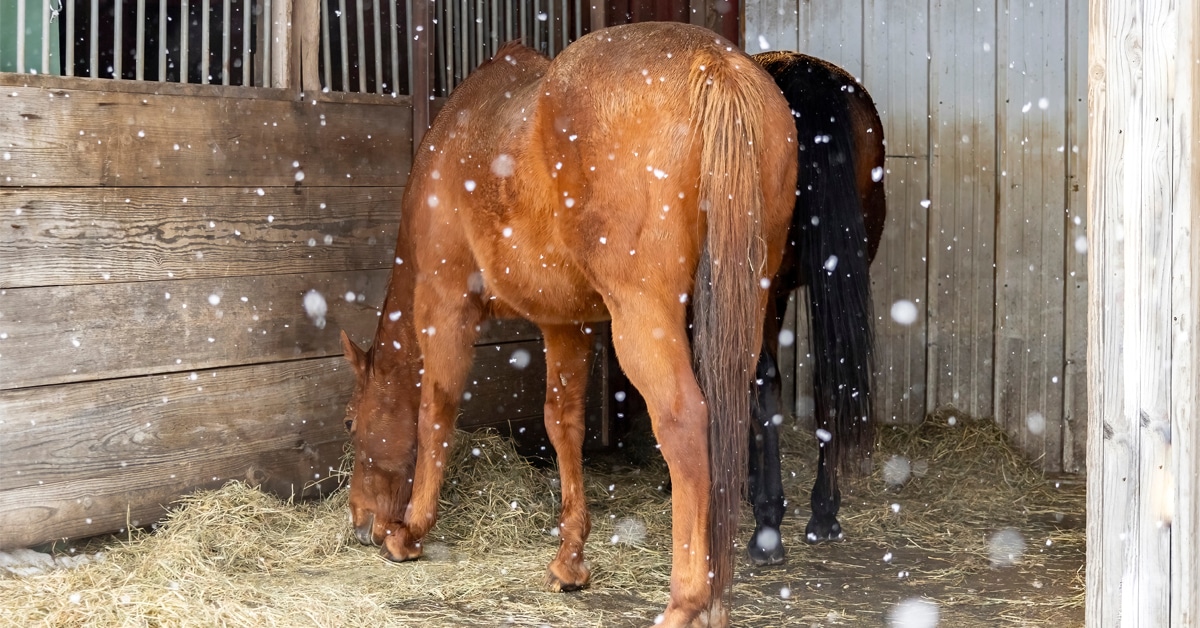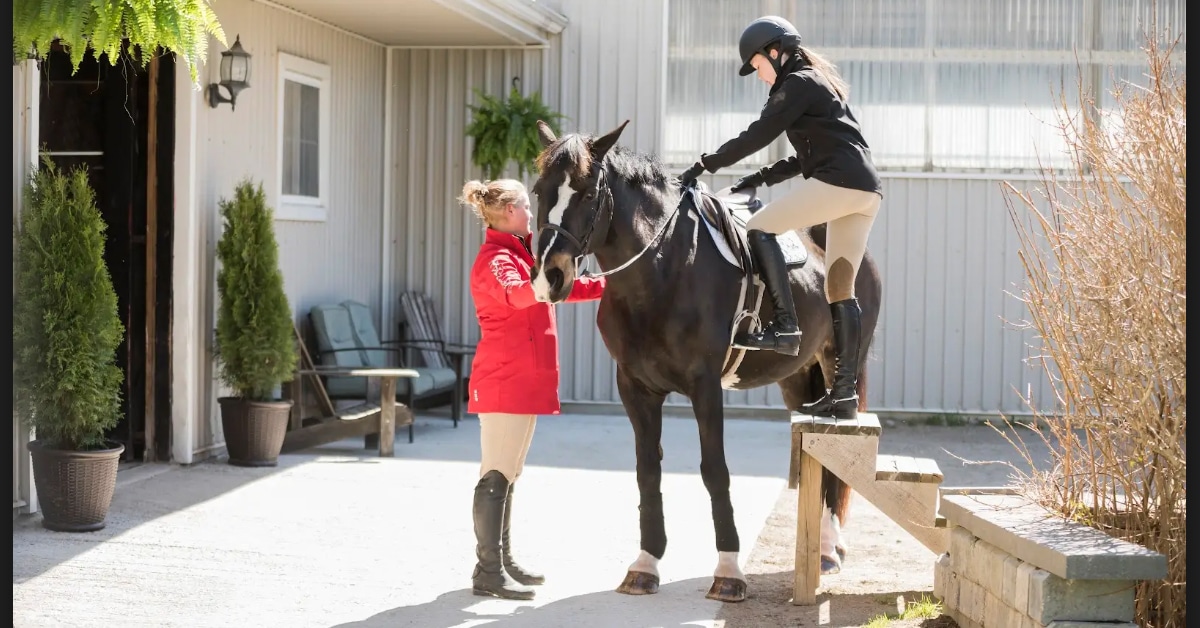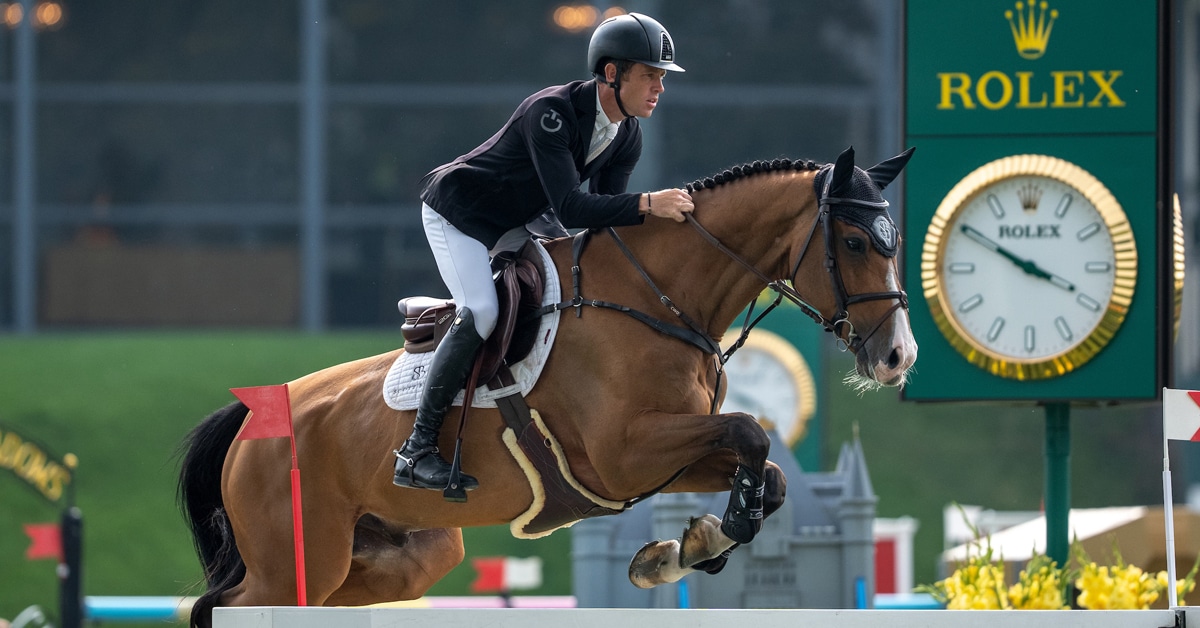Hannah Beaulieu is an FEI grand prix dressage rider from British Columbia currently training and showing in Germany at the stunning dressage stables Dressurstal Meggle. Her season this year with the grand prix horse Ray Dance, owned by Family Meggle, has featured high placings at top European venues.

Hannah Beaulieu.
Previously, Beaulieu trained at Jessica von Bredow-Werndl’s legendary facility Aubenhausen, working with Jessica and her brother Benjamin Werndl for three years. She’s looking forward to moving back to Aubenhausen in August for additional training on her up-and-coming eight-year-old, Siri. “Jessica has been a mentor to me,” Beaulieu, 28, says, “and I am so grateful she is in my life.”
With her experience in the high-pressure, competitive European dressage scene, Beaulieu is able to provide her best tips and hacks for exemplary rider turnout in the show ring.
First impressions
Good presentation is a key way to boost your feelings of confidence and preparedness for that moment when you’re coming down centreline. The impression good turnout creates speaks to the many hours you’ve put in prior to your brief time in the ring.
“The first impression a rider and their horse makes is very important,” says Beaulieu. “While turnout does not impact the result or the score of the performance, it shows respect and professionalism to the judges and to the competition. As riders it is with great passion that we can demonstrate our horse’s training in competition, and our turnout should represent that passion.”
It’s important to remember, Beaulieu says, that “dressage is no fashion show, but you can still beautifully present yourself and your horse.”

Hannah and 8-yr-old Siri will be heading back to Jessica von Bredow-Werndl’s facility to train. (lilyforado/ digishots photo)
The Show Day Process
Beaulieu meticulously plans her process on show days, making sure, above all, to give herself enough time. “I always get myself ready about two hours before I need to sit on the horse for the warmup. And I always leave myself an extra 15 minutes in my time plan for any bad hair days or unforeseen circumstances.”
Like her mentor von Bredow-Werndl, Beaulieu always tries to share a quiet moment with her horses on show days while braiding them. “I also always braid my horses myself. Even if I am lucky to have a groom at a competition, I find it very therapeutic and good bonding time with my horse.”
Her good-luck superstition involves tempting the showground dirt gremlins and “is definitely not a tip! Something I don’t recommend, but I always do, is braiding in my white breeches. I’m not sure why, but it’s something I have to do, and in my order of getting ready, that comes first. And it has, so far, never been a disaster with dirty breeches!”
Finally, Beaulieu always takes extra care to keep her boots their cleanest. “The last thing I do before getting on is put my boots on to prevent them from getting too dusty or dirty while in the stable. I always have patent leather boots, which make a last-minute clean and polish super easy.”
Fit is Key
Beaulieu encourages competitors to choose a jacket that suits and fits them best. “I love to see clean, well-fitted attire that compliments the horse. It is important that your attire reflects your personality while not being too distracting as to take away from the horse and performance.”
To this end, she prefers jackets that provide the cleanest lines for a professional look and optimal functionality and safety. Improperly-fitting attire with lots of loose fabric can be distracting at best, or a safety hazard at worst.
“I am a fan of the very tailored and fitted jackets that look sporty and athletic, versus a more traditional ‘boxy’ looking fit,” says Beaulieu.

Since the dressage attire rules have been relaxed, more colours and fabrics (and bling!) are being seen in the ring. (Samshield Alacantra Shadbelly / Flying Changes Isabell Tailcoat)
In recent years, there have been many developments in the technology behind jackets and breeches that make them more comfortable for hot weather and humid conditions. It’s important to take this into consideration if you’re showing somewhere where heat can be a problem. “The new fabrics of the jackets are amazing!” Beaulieu says. “Most coats now are made of very modern, lightweight and breathable fabric that fit very beautifully.”
In terms of jacket colours, make sure you choose yours carefully, with an eye to what matches your horse. “The biggest change I see in trends is the now very relaxed rules on colour and style allowed in the competition arena,” says Beaulieu. “Personally, I prefer to ride with a simple black or navy-blue coat, but I respect the riders [and nations, such as the Netherland’s orange coats] who express their individuality [or national pride] with other colours. I think, as long as it is cohesive as an entire outfit and doesn’t prove too detracting from the horse, then it is a welcome refreshment to the sport. Perhaps pick one unique colour jacket and compliment it with something simple like a black helmet and boots.”
Beaulieu says ill-fitting helmets, or helmets that aren’t worn properly, are her biggest pet peeve.
“I find it very distracting when I see a helmet that is either too low or high on the forehead, or is moving up and down. Not only is it distracting from the test, but it is extremely unsafe to ride with a helmet that is not properly fitted to the rider.”
Competitors should note EC General Regulations state all headgear must be approved by an accredited certification organization, properly fitted, and “…securely fastened by a safety harness permanently affixed to the headgear.”
Hair and Makeup
According to EC rules, long hair must be tied back in a hairnet, braid, or bun. Not only can loose, long hair be a distraction from the overall neatness of your presentation, Beaulieu says her hair can also be a distraction for her while she rides. “I have very long hair, and I have gone through trial and error to find a way to make sure my hair stays secure in a bun so that it is not distracting to me while I ride.”
When it comes to finding the right style, it’s important to choose something that works for your hair length and type. “I personally use the “sock bun” method ‒ plus a pearl embellished hair net and a LOT of hairspray!” Beaulieu says.

Polish rider Sandra Sysojeva made a bold statement aboard Maxima Bella with bright red lapels and piping accents. (FEI/Benjamin Clark photo)
The “sock bun” method involves using a sock to mould the hair into a perfectly uniform, rounded shape. (For a tutorial, click here.) Not only does the “sock bun” method give a professional, clean look, it is also safer for equestrian competitors because, when paired with a hairnet and hairspray, bobby pins are not necessary. (Note: the ponytail should be positioned near the nape of the neck to accommodate the helmet.)
Beaulieu cautions against trying a new hairstyle on the day of the show. It’s important to know, for example, how to strategically position your bun low enough so it sits below the line of your helmet, while also being high enough to allow you to lift your chin. “Be sure to practice at home when trying out a new hairstyle,” Beaulieu says. “Ride with your hair done and the helmet you would wear in competition at home in a ‘trial run’. Better not to try something new at the competition, when it could be distraction and add to show nerves!”
Makeup isn’t a necessity, but it is something many riders in the upper levels take into consideration as a part of their overall presentation. Beaulieu says subtle, understated makeup [not dramatic smokey eyes you can see from space] is key for the show ring. “I like to keep my makeup simple and professional.”
Always do a Practice Run
As a final note, Beaulieu encourages competitors to be make sure they’ve tested out any tack and clothing before going into the ring. That new saddle pad you’ve been saving for show-day? Ride a test with it at home first.
“Make sure the equipment that you use is properly fitted and that you have tested it at home beforehand. For example, try out your competition saddle pad if it is a different style or material than what you normally would use, in case it is shifting under the saddle. Same goes for ear bonnets or anything new you would like to introduce to your competition attire. Give everything a trial run before completion to be as prepared as possible, so you can focus on giving your best performance with your horse.”
Your presentation should present a unified partnership with your horse. To that end, little coordinating details go a long way, such as matching your horse’s fly bonnet and saddle pad piping to your jacket colour, or his browband chrome to your stock-pin. “Don’t forget to prepare your horse’s turnout just as much as your own!” Beaulieu says.
(For a complete list of rider turnout rules for the dressage ring, see Equestrian Canada’s Dressage Rule Book.)
The Latest


